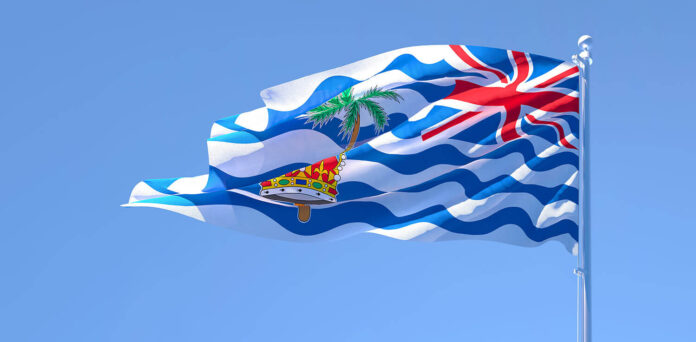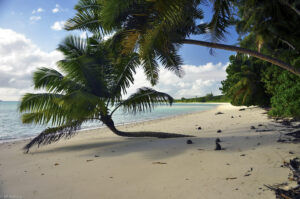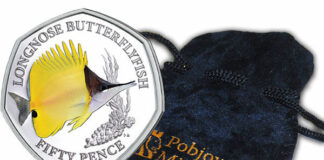
What do collector coins have to do with the human rights lawsuit of a people in the South Sea that has been going on for decades? The matter sounds quite complicated and, admittedly, the background of this story is rather complex. So before we get to the coins, we need to go back to 1966, to the Indian Ocean, some 1,500 kilometres south of Sri Lanka …
The Chagos Archipelago Between Colonial History and US Intelligence
At that time, many former colonies separated from the British Empire, and in 1965 the island of Mauritius became independent. Not wanting to lose the Chagos Archipelago, which had previously been part of Mauritius, the UK simply combined it with other atolls to form a separate entity: the British Indian Ocean Territory (BIOT). This is not a separate country but a special territory under the control of the British Crown that is administered by an appointed Commissioner based in the London Foreign Office.

In 1966, the United Kingdom leased the entire island archipelago to the United States of America for a period of 50 years. The USA established a military base on the main island of Diego Garcia in 1971. The base was turned into a restricted area and is still used as an intelligence base today. Part of the deal was the evacuation of the entire area. The then about 1,200 inhabitants – the Chagossians – were forcibly removed between 1967 and 1973 to the Seychelles and to Mauritius. They were forbidden by law to return to their home.

Why Are the Chagossians Still Living in Exile?
This was the beginning of a legal odyssey, since the Chagossians took legal action against this decision. A British court ruled in their favour in 2000. In 2003, a court ruled that the Chagossians were not entitled to compensation. Moreover, the Queen reaffirmed the banishment by means of an Order in Council. In 2017, the UN recommended that the case be submitted to the International Court of Justice, which concluded in a ruling of 2019 – which was not binding under international law – that the British control of the territory was unlawful and that the atoll belonged to Mauritius.
However, being on the right side of the law does not mean that the other party is going to accept your claims. Mauritius threatened to leave the Commonwealth. The United Kingdom ignored the case and extended the agreement with the USA for another 20 years in 2016.
And what does all this have to do with collector coins?

Will the Chagossian People Be Compensated in Silver and Gold Collector Coins?
The BIOT does not really need money. Members of the military who pay with US dollars in their daily lives are the only ones who live there. Nevertheless, the British Commissioner has the right to issue banknotes and coins according to a 2008 order. The interesting aspect about this is that there is no limit regarding the number of issued specimens and BIOT pounds are worth just as much as pounds from Britain. (Apparently, they only thought about collector coins at the time.) This came to light thanks to Jonathan Levy, a lawyer representing two Chagossians, Bernard Nourrice and Solomon Prosper, seeking justice for the entire Chagossian people. On 27 April 2021, they sued the United Kingdom represented by the Queen for compensation.
Jonathan Levy made his position clear by telling CoinsWeekly: “There is no doubt that the fishing rights of the Chagos Archipelago are of material and cultural value. And Chagossians are not even allowed to enter the waters of the area. The colony administration has the power to mint the money demanded and no excuse for the ongoing violation of the property and the rights of the inhabitants.”
Levy cites African and international jurisprudence that would have granted his clients the right to exploit the rich fishing grounds around the atoll in past decades. Even under British law, he states in his complaint, Chagossians have not been deprived of their fishing rights by means of the forced removal.
As compensation, they demand 1 billion pounds (about 1.16 billion euros) – not from the United Kingdom, but from the British Indian Ocean Territory. The reason for this figure is that Levy found out something every collector of modern coins knows: the British Pobjoy Mint has been issuing collector coins on behalf of the territory for years, and these coins are legal tender on the atoll. Levy points out that there does not appear to be a limit regarding the Commissioner’s right to mint coins. Thus, he could simply give the order to mint such coins with a total face value of one billion BIOT pound (or to print banknotes), which could then be exchanged by the Chagossians for British pounds in the UK – at an exchange rate of 1:1!

Currently, the Pobjoy Mint is issuing the 2 pound coin “Parrotfish”, the official price of the issue is £12.46. To produce half a billion of these coins would obviously be absurd, they would be worthless on the collector market, and we do not even have to start a discussion about specimens with special colour application or exclusive metals like titanium. In theory, the Commissioner might be able to have a single coin with a face value of 1 billion BIOT pounds minted: what a collectible that would be (let alone the face value of course)!
The future will tell us about the impact of this legal dispute on the market of collector coins. Levy points out that the legal situation in the British Antarctic Territory is the same. (Perhaps you remember the 2020 Pobjoy coin on climate change, issued on behalf of the British Antarctic Territory?)
The Pobjoy Mint is quite unconcerned about the matter, seeing itself merely as a producer of coins. They believe that political questions need to be answered by the British government or the Commissioner of the BIOT. Of course, Jonathan Levy sees things differently. According to him, the Pobjoy Mint and collectors who buy these coins are supporting the “unlawful British apartheid administration of a colony”.
Here you can watch an interview with Jonathan Levy:
And here you can download the detailed claim form.
Find out more about the secretive Diego Garcia military base on CNN.
You can find the coins of the Pobjoy Mint in our database Cosmos of Collectibles.




